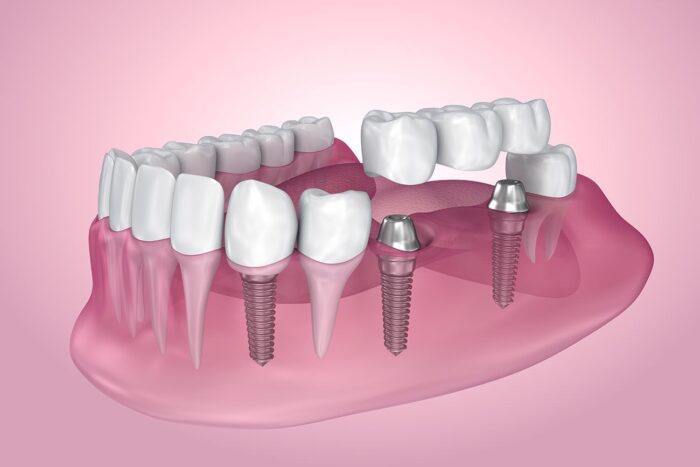Dental patients with missing teeth can find the ideal tooth replacement solution with implants. These fixtures can enhance the appearance of your smile as well as restore oral functions that may have deteriorated following the loss of one or more teeth.
There are several kinds of implants that can benefit your oral health, and, depending on your unique dental needs, it may be advantageous to receive more than one of these. Lanier Family and Cosmetic Dentistry, a dental practice located in Buford, GA, describes three types of dental implants that can improve your smile after tooth loss.

Single Dental Implant
A single dental implant features a titanium post that a dentist surgically inserts into the jaw. When this heals, your dentist secures a prosthetic tooth or crown to an abutment above the jawline attached to this post.
This type of implant replaces one missing tooth, but patients can receive more than one single dental implant if needed. Implants fill gaps where a tooth was lost so that you can have a beautiful, natural-looking smile again.
Implant-Supported Dental Bridge
An implant-supported dental bridge is an ideal treatment for patients missing three or more teeth in a row. This fixture uses two titanium posts: one for each end of the bridge prosthetic.
With a dental implant, you can have the ability to eat and speak normally once more. Patients with this type of tooth replacement can enjoy restorative benefits for a lifetime because implants are permanent solutions.
All-on-Four Dental Implant
An All-on-Four dental implant replaces an entire arch of teeth, and some patients can receive this implant on both the top and bottom of their mouths. This implant uses four titanium posts to secure the arch of prosthetic teeth.
Unlike other tooth replacement treatments, implants prevent bone loss in the jaw that may occur if a patient loses a tooth. This is because the titanium post replaces the missing tooth root to stimulate the jawbone and keep it healthy.
